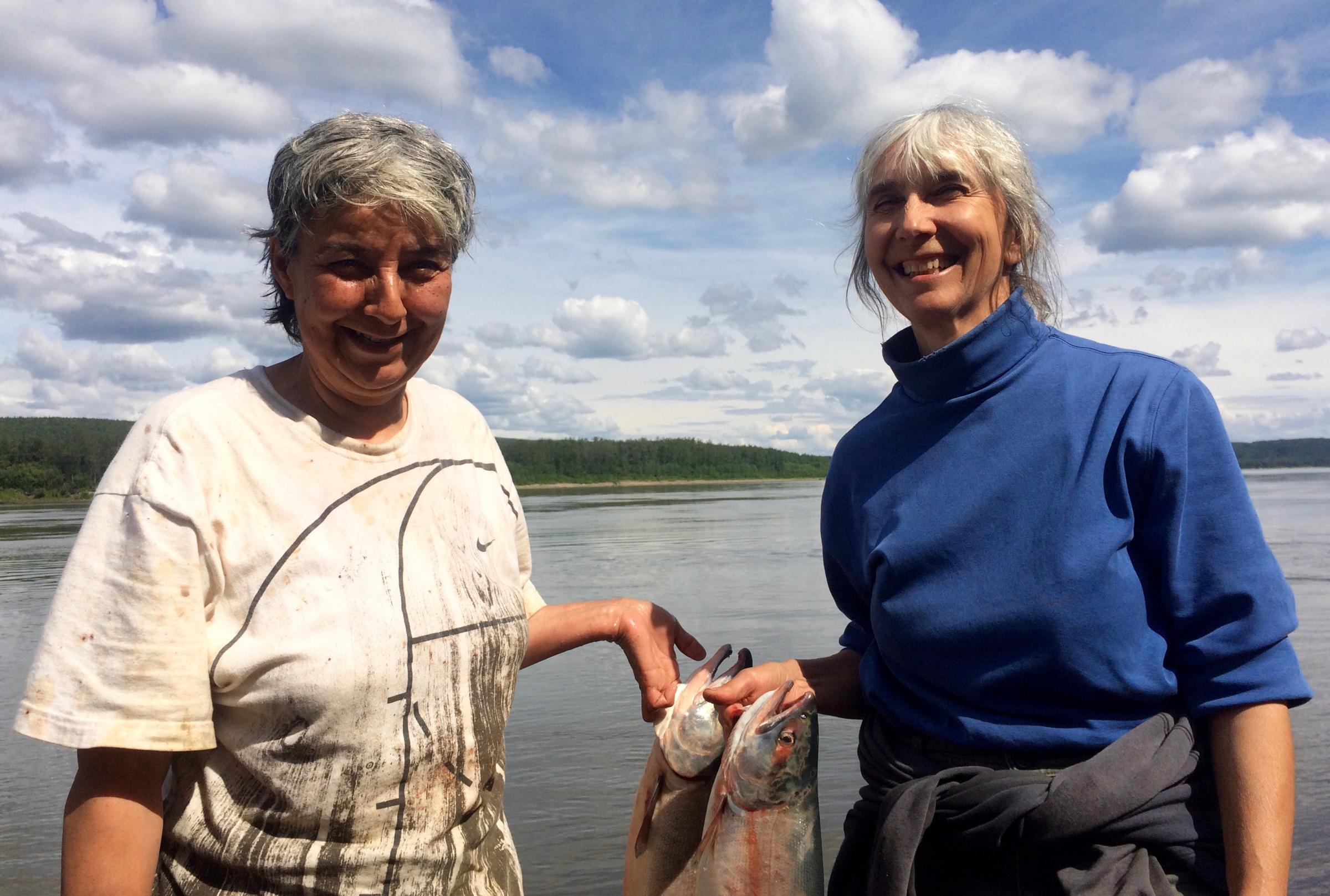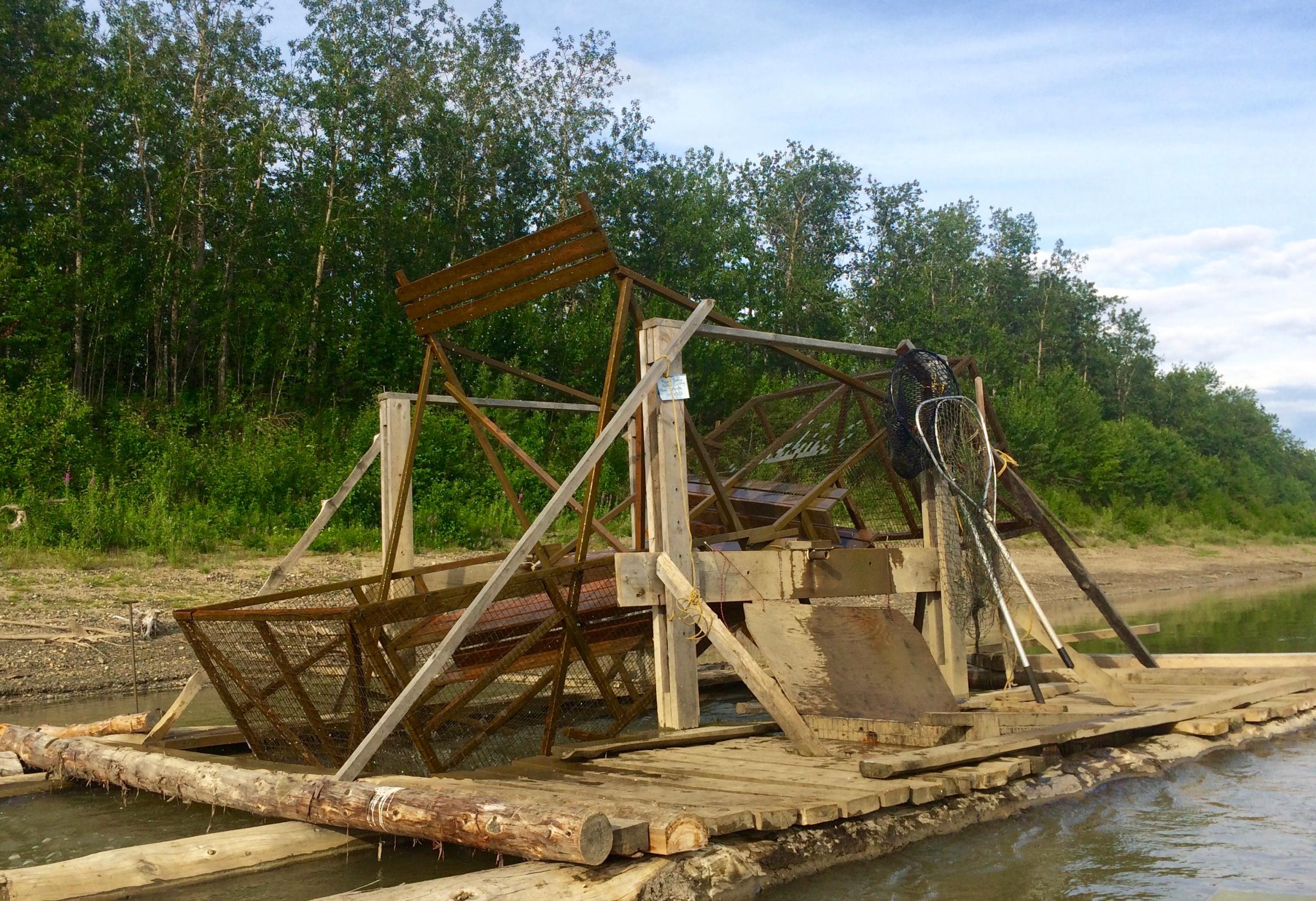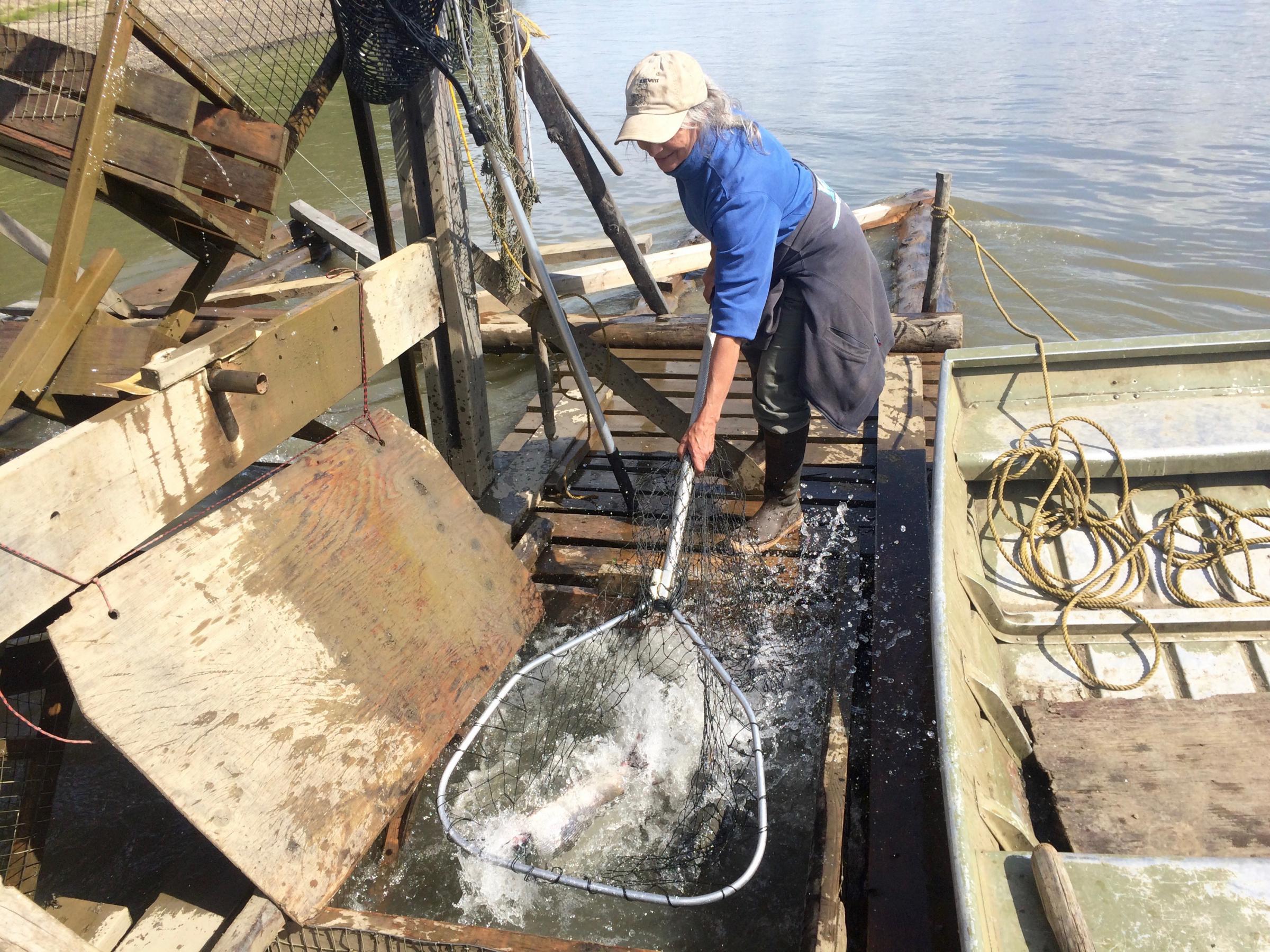
With gillnet fishing limited to only a few days on the Kuskokwim for most of June and July, some people on the river turned to alternative ways of filling their smokehouses.
In Sleetmute, Barb Carlson and Maggie Bobby ran a fish wheel to get their season’s catch of red salmon.
Even after the two women had enough salmon for themselves, they wanted others to get a chance.
“I’ll bet you by the time we’re done there are 200 people who’ve eaten fish that have come out of that wheel,” Carlson said.
Carlson and Bobby have been running their wheel since May.
Gray-haired with dark, expressive eyebrows, the pair, both about 60 years old, have been fishing together for nearly two decades. They even wear matching hats.
Bobby’s cabin is off the grid, only accessible by boat and a half-mile from Carlson’s.
Bobby picked 60 reds from the wheel that afternoon and took a break from cutting to admire the blue sky, warm sun, green hills and the Kuskokwim flowing by.
“That’s what I miss when I go other places,” she said. “Listening to the water, the waves, the wind. Because I don’t have electricity.”

The friends started running their wheel three years ago, as the king salmon stocks dropped and fishing restrictions grew tighter.
“We could fish when it was closed,” Bobby said, “because we could throw back all the kings and dogs, whatever fish we didn’t want.”
“The kings are all released and they’re amazingly alive!” Carlson added. “These things are jumping and struggling.”
Bobby’s daughter and grandchildren came down to help cut.
Across the river at the wheel, Carlson climbed out of her boat and onto a wooden raft anchored a dozen feet from shore.
Beside her rotated the wheel’s long arms.
“It just goes ’round and ’round all by itself. Here comes one,” she explained.
A 6-foot wide wire basket lifted a red salmon from the water.
Rotating upwards, it slid the twisting fish into a box below.
In mid-air, silver scales flash in the sun. The wheel’s wooden arms stretch 12 feet and form a cross. Each arm is a paddle that catches the water, turning the wheel.
The baskets are at the end of two of the paddles. They drop the fish in a hole in the raft where a wire box sits, sunk in the water.
Carlson said it’s hard to tell how many fish are in the box by looking, but she guessed between 20 or 30, including a king she planned to release.
Both women say they’ll never go back to setting a net.

“I can spend hours on a day like today just listening to the wheel go around,” Carlson said. “On a whole different subject, I need go and get to my telephone and try to line somebody up for the evening pick.”
It’s a toss up on whether the fish wheel saves labor compared with gillnets.
You have to check the wheel twice a day.
It’s heavy, and you have to push it on shore in the fall and pull it out in the spring. You have to raise the wheel during high water and clear out brush.
But the wheel saves gas, because there’s no drifting.
The fish are in better condition because they’re fresher, and you only keep the fish you want and let the rest continue on, alive.
A few hours later, when they checked the wheel again with help from friends, they tossed out the dog salmon and the kings.
Using dipnets, they hauled the thrashing reds from the box and tossed them in the boat.
Carlson shoved a knife into the gills, bleeding the fish.
Red blood and mucus smeared the writhing bodies and splattered all over her.
Half the fish went to one of the girl’s mothers. The other half to the owner of Sleetmute’s only store.
The fish wheel, a design from the past, may turn out to be a design for the future.
